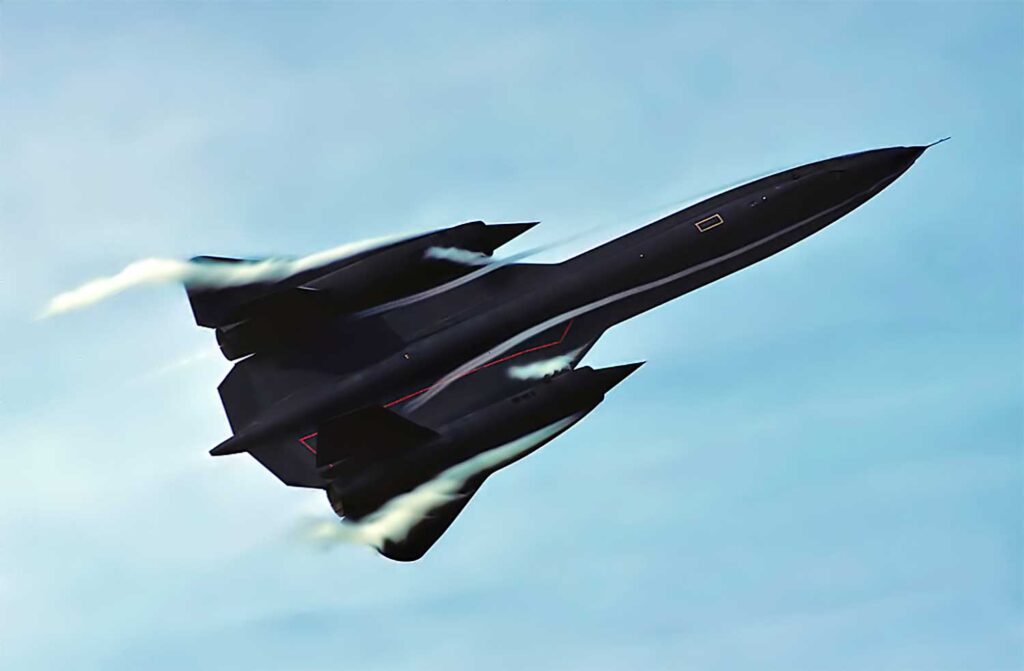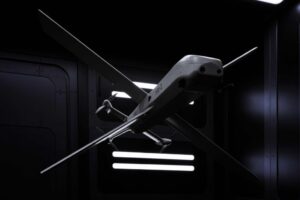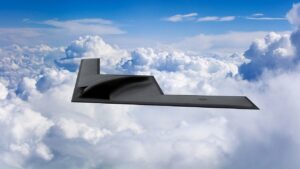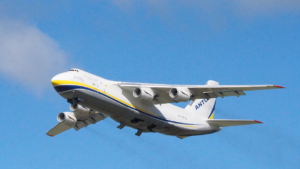The Lockheed SR-71 Blackbird remains an icon of engineering audacity, a spy plane that redefined reconnaissance when it joined the U.S. Air Force decades ago. It’s not armed with bombs or guns—its weapons are altitude and speed, cruising at a blistering Mach 3.2, or over 2,200 miles per hour, while soaring to 85,000 feet. That combination proved untouchable; not a single Blackbird was ever shot down, its pilots outrunning missiles and foes with a grace that still feels almost otherworldly. As someone who’s always been fascinated by the ingenuity of Cold War tech, I can’t help but marvel at how this bird turned evasion into an art form.
Its design screams purpose. Stretching long and lean, the Blackbird guzzles fuel—12,000 gallons’ worth, packed into two-thirds of its fuselage and wings, a necessity for those extreme flights. Twin jet engines, nestled in nacelles with those distinctive movable inlet spikes, power it forward, while elevons and rudders handle the flight controls with precision. What’s striking is how every curve and edge serves a mission: gathering intelligence from heights no enemy could touch. The delta wings, with their sharp, triangular sweep, slice through the sound barrier, shedding drag that would cripple a conventional aircraft. Those chines along the fuselage don’t just look sleek—they whip up vortices that boost lift by 20%, stabilize the nose, and even shrink its radar profile, a nod to early stealth innovation.
The engines themselves are a feat of ingenuity. The J58 turbojets, paired with those adjustable spikes, harness supersonic airflow with a clever trick: slowing it to subsonic speeds inside the inlet to feed the combustion process, generating an astonishing 58% of thrust. It’s a bit like turning a garden hose into a high-pressure cannon—except this one thrives at 80,000 feet, where thinner air demands less internal pressure. The afterburners, running continuously for hours, push the limits further, though they rely on a quirky fuel, JP-7, ignited by a volatile chemical, triethylborane, that spits green flames on startup. I’ve always found that detail oddly poetic—a fiery salute to its daring design.
Heat was the enemy, and titanium became the shield, with panels expanding inches under temperatures topping 700°F. Fuel leaked on the ground until sealant patched the gaps, a trade-off for a frame built to flex at speed. The cockpit, a claustrophobic marvel, pumped in chilled air to keep crews comfortable while windows hit 500°F outside. Those pressure suits, with their orange fireproof layers and oxygen feeds, feel like a lifeline—and a reminder of the human stakes behind this machine.
What lingers, though, is its rarity. The Blackbird’s success hinged on a rare alignment of talent, funding, and freedom to innovate, a luxury that doesn’t come often. Its cameras, capable of snapping 82-mile-wide swaths or zeroing in on six-inch targets, and its astroinertial navigation—pinpointing locations within 300 feet pre-GPS—speak to a era of bold experimentation. Yet, watching it refuel mid-flight or endure “unstarts” that jolted pilots against cockpit walls, I can’t shake a sense of awe mixed with unease. This was a plane that lived on the edge, and its legend endures because of it.
You get the picture: the SR-71 wasn’t just a tool; it was a statement. Its legacy challenges us to wonder what other marvels might emerge if we dared to push boundaries again.



